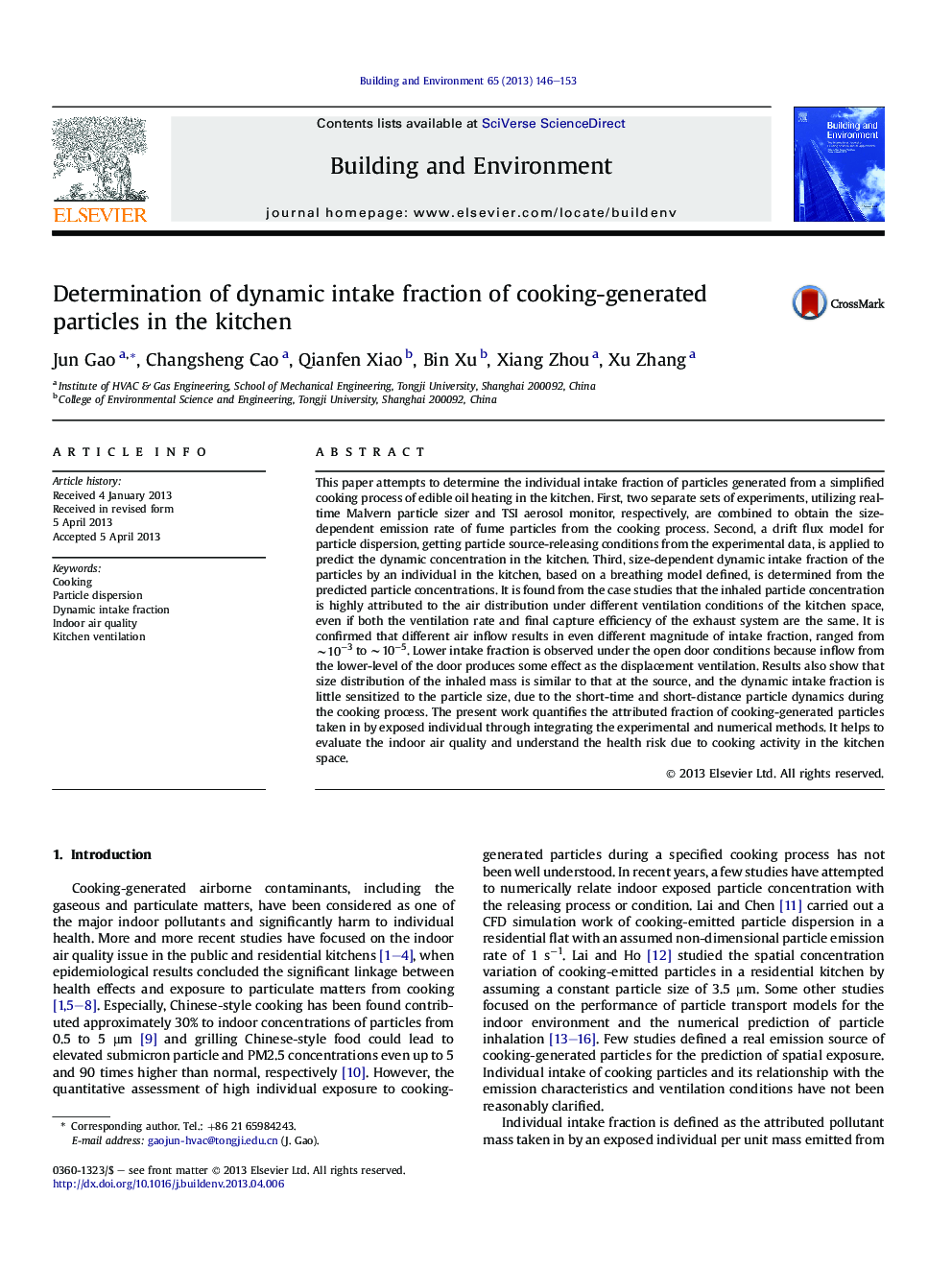| کد مقاله | کد نشریه | سال انتشار | مقاله انگلیسی | نسخه تمام متن |
|---|---|---|---|---|
| 6701017 | 502557 | 2013 | 8 صفحه PDF | دانلود رایگان |
عنوان انگلیسی مقاله ISI
Determination of dynamic intake fraction of cooking-generated particles in the kitchen
ترجمه فارسی عنوان
تعیین میزان جذب پویا از ذرات تولید شده در آشپزخانه
دانلود مقاله + سفارش ترجمه
دانلود مقاله ISI انگلیسی
رایگان برای ایرانیان
کلمات کلیدی
آشپزی، پراکندگی ذرات، کسر ورودی پویا، کیفیت هوا داخل تهویه آشپزخانه،
موضوعات مرتبط
مهندسی و علوم پایه
مهندسی انرژی
انرژی های تجدید پذیر، توسعه پایدار و محیط زیست
چکیده انگلیسی
This paper attempts to determine the individual intake fraction of particles generated from a simplified cooking process of edible oil heating in the kitchen. First, two separate sets of experiments, utilizing real-time Malvern particle sizer and TSI aerosol monitor, respectively, are combined to obtain the size-dependent emission rate of fume particles from the cooking process. Second, a drift flux model for particle dispersion, getting particle source-releasing conditions from the experimental data, is applied to predict the dynamic concentration in the kitchen. Third, size-dependent dynamic intake fraction of the particles by an individual in the kitchen, based on a breathing model defined, is determined from the predicted particle concentrations. It is found from the case studies that the inhaled particle concentration is highly attributed to the air distribution under different ventilation conditions of the kitchen space, even if both the ventilation rate and final capture efficiency of the exhaust system are the same. It is confirmed that different air inflow results in even different magnitude of intake fraction, ranged from â¼10â3 to â¼10â5. Lower intake fraction is observed under the open door conditions because inflow from the lower-level of the door produces some effect as the displacement ventilation. Results also show that size distribution of the inhaled mass is similar to that at the source, and the dynamic intake fraction is little sensitized to the particle size, due to the short-time and short-distance particle dynamics during the cooking process. The present work quantifies the attributed fraction of cooking-generated particles taken in by exposed individual through integrating the experimental and numerical methods. It helps to evaluate the indoor air quality and understand the health risk due to cooking activity in the kitchen space.
ناشر
Database: Elsevier - ScienceDirect (ساینس دایرکت)
Journal: Building and Environment - Volume 65, July 2013, Pages 146-153
Journal: Building and Environment - Volume 65, July 2013, Pages 146-153
نویسندگان
Jun Gao, Changsheng Cao, Qianfen Xiao, Bin Xu, Xiang Zhou, Xu Zhang,
